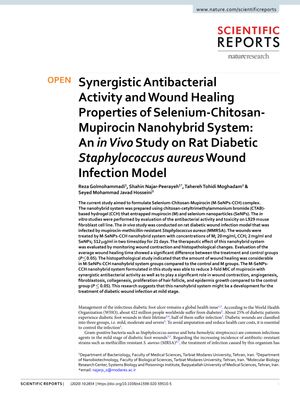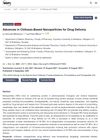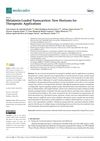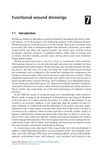Synergistic Antibacterial Activity and Wound Healing Properties of Selenium-Chitosan-Mupirocin Nanohybrid System: An In Vivo Study on Rat Diabetic Staphylococcus Aureus Wound Infection Model
February 2020
in “
Scientific reports
”
selenium chitosan mupirocin nanohybrid system chitosan-cetyltrimethylammonium bromide hydrogel mupirocin-methicillin-resistant Staphylococcus aureus wound healing wound contraction histopathological changes synergistic antibacterial activity minimum inhibitory concentration angiogenesis fibroblastosis collagenesis hair follicle proliferation epidermis growth SeNPs CCH MMRSA MIC

TLDR The nanohybrid system significantly improved wound healing and showed strong antibacterial activity.
The study formulated a Selenium-Chitosan-Mupirocin (M-SeNPs-CCH) nanohybrid system using a chitosan-cetyltrimethylammonium bromide-based hydrogel to treat mupirocin-methicillin-resistant Staphylococcus aureus (MMRSA) infections in a rat diabetic wound model. The system, applied twice daily for 21 days, significantly improved wound healing, as evidenced by wound contraction and histopathological changes, compared to control groups (P ≤ 0.05). The nanohybrid system demonstrated synergistic antibacterial activity, reducing the minimum inhibitory concentration of mupirocin threefold, and promoted angiogenesis, fibroblastosis, collagenesis, hair follicle proliferation, and epidermis growth. This suggests potential for treating mild-stage diabetic wound infections.


